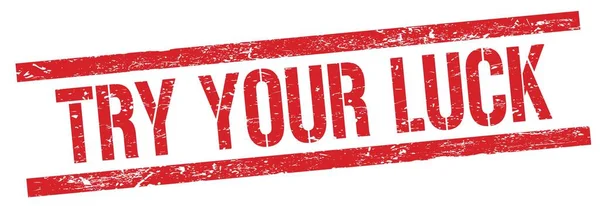Espresso Machine Coffee To Water Ratio

An accumulation the utmost effective Espresso Machine Coffee To Water Ratio wallpapers and backgrounds available for download for free. We hope you enjoy our growing number of HD images to use as a background or home screen for the smartphone or computer. Please contact us if you wish to publish a wonderful wallpaper on our site. Only the best wallpapers. Day-to-day improvements of new, wonderful, HD wallpapers for pc and phones.
Numerous wonderful Espresso Machine Coffee To Water Ratio wallpapers to be able to obtain intended for free. Additionally you can upload in addition to share your selected wallpapers. HD wall papers and also historical past pictures

Coffee to Water Ratio Calculator + Charts for Every Method

The Ratio Eight Smart Coffee Maker Cheap coffee maker

The Perfect Coffee to Water Ratio Coffee to water ratio

Espresso machine coffee to water ratio
The ratio used most often is 1:2. In fact, it's the closest i get to espresso without using an espresso machine, even better than a moka pot coffee. A ratio of between 1:2 and 1:3 is known as a normale, or just espresso. The ideal ratio is 1:3, that is, for every gram of coffee, use 3ml of water. Finally, a ratio of between 1.3 and 1.4 is known as a lungo. You can vary the strength, flavor, and caffeine content of the coffee not by changing the coffee to water ratio but by getting the appropriate type of coffee beans. We say this because folks will say 18:1 or 1:18 without clarifying which is which, and this can be confusing at first. The ideal coffee to water ratio for this method is 1:20 coffee to water to obtain a balanced coffee. Dalla corte yan espresso’s brew ratio seems simple. According to wikipedia, the usual ratio of coffee to water for the style of coffee most prevalent in europe, america, and other westernized nations is between one and two tablespoons of ground coffee per six ounces of water. However, there is no standard ratio because you should consider your preference of strength when choosing the amount of water you will use. However, a good place to start is 1 part espresso to 2 parts water. Most baristas agree that a good coffee to milk ratio for a cappuccino is 1/3 espresso to 2/3 milk. The resulted coffee is darker, more concentrated and oily, resembling more to an espresso. And attach the portafilter to the espresso machine.
Use the right water to coffee ratio. This definition comes from the specialty coffee association of america (scaa), and is generally considered the standard for coffee. This gives you a lot of control over a variety of parameters. Avoid using water softening pitchers like the zerowater—these filters can actually take too many minerals out of the water, leading to extraction problems and even potential machine damage—all espresso machines require some amount of dissolved minerals to function, and to make coffee taste great. For most moka pots that would be 'as much water as can fit into water chamber, as much coffee as can fit in the filter'. When using an espresso machine that heats the water itself, it's best to use soft water so no limescale builds up. Pour in a sachet of 25g descaling powder into the water tank and fill up with 1 litre of water.; So in many standard machines you may use 18 grams of coffee for an output of 36 grams of coffee. Every coffee is different, and your preferred brew ratio might change from coffee to coffee, but understanding brew. For 'espresso'(it won't be actual espresso though, no crema, etc, but somewhat similar) take 1:4 to. Manual espresso machines rely on a lever or a manual pump to force the water through your coffee bed. The amount of water you use when making your espresso will determine the coffee’s strength. The machine works perfectly well in providing that desired coffee extraction, shot and flavour. This removes any condensed water droplets as well as other particles that may have gotten in. The ideal water temperature at the grouphead of the espresso machine should be between 195 °f / 91 °c to 203 °f / 95 °c, with a target temperature for most coffees of 200 °f / 93 °c.
Which is, of course, the ultimate goal. A more exact weight ratio of 1:17 coffee and water is also used in publications. Espresso vs coffee make a macchiato like a professional americano: Judging by safety valve, it is. Espresso coffee uses a 1:2 ratio. Baristas tend to make up their own shot of espresso to water ratio, so the results you get for your coffee can be different depending on your favored barista. Since coffee is 99% water, the larger number in the ratio is always water. Here, the additional water dissolves elements from the coffee bean that other extraction methods would leave behind. Significantly different than the recommended proportions for aeropress and much, _much_ better in my opinion. The speciality coffee association (sca) generally recommends a 1:17 ratio of coffee to water. Here is an example of a recipe for the french press. The glass carafe that will come with your technivorm moccamaster and the hot plate underneath the carafe will keep the coffee hot for up to 1,5 hours. Making coffee at home or office shouldn’t feel like a compromise. A ratio between 1:15 and 1:17 will get you from bold to standard. Using the mina app to control water flow in the mina.
Remove the portafilter from the group head and place a large container beneath the group head, the steam wand and hot water dispenser (if any). 8 grams/0.28 oz of coffee ( coarse grind ) Brew ratio for the technivorm coffee machine. The golden ratio is a 1:18 ratio of coffee grounds (grams) to water volume (ml). Mastering the art of coffee to water ratio how to roast coffee beans the right w. Because of its efficiency, drip typically requires less coffee. The ratio removes variables like water temperature, extraction time, and pour over pattern so you can worry less about making your coffee, and more about drinking it. But of course, everyone can and should choose their own. The 1 is the amount of coffee in grams and the 2 is the output of coffee in grams from the espresso machine. They help to measure the perfect ratio of coffee grounds to water and are more reliable than a coffee scoop. Simply put, the brew ratio is the relationship between the amount of dry coffee used (the dose) and the amount of coffee extracted (the yield). Brew ratio is a preference, and baristas and home baristas are redefining espresso and expanding our understanding of how to use an espresso machine to create a delicious cup of coffee. Brew ratio, coffee roast level, coffee varietal, and processing all can have an effect on the optimal brew temperature. Limescale can cause coffee makers to malfunction. An espresso coffee also uses a coffee to water ratio.
Typically, modern espresso is brewed around a 1:2 ratio, meaning that if you start with 20g of ground coffee in your basket you should aim for something like 40g of brewed espresso in your cup. But the meaning of the numbers in the ratio are different. It is an efficient way to brew coffee because there is a constant supply of fresh water running through the coffee. But it’s more than just the relationship between the amount of dry coffee you use and the amount of brewed coffee you produce. As a result, it’s less strong but more bitter than an espresso. 33g | 500ml | 4 marker on water tank 47g | 750ml | 6 marker on water tank 62.5g | 1l | 8 marker on water tank 78g | 1.25l | 10 marker on water tank. (plus, when you get into ratios for espresso, it gets more confusing with more concentrated ratios like 1:3).
Related post:


Instagram photo by Calibre Coffee Roasters • May 22, 2016

How To French Press Like A Pro Coffee press, Coffee to

Arc Roaster 700g Professional Coffee Roaster Coffee

Starting Your Morning Off Right With The Mr. Coffee At

11 Best Pour Over Coffee Makers for Caffeine Addicts

Pin di Coffee

Eight Coffee machine design, Coffee machine, Coffee maker

The 10 Best French Press Coffee Makers in 2020 Reviewed

Pin by Laras Gunardi on Barista in 2020 French press

MiO is a taller, slimmer coffee maker compared to today’s

Best Coffee to Water Ratio How to Measure for Most

What is Lungo? in 2020 Coffee type, Types of coffee

Chemex Water To Coffee Ratio Reddit di 2020

This Is the Golden Ratio of Coffee Grounds to Water

The 10 Best French Press Coffee Makers in 2020 Reviewed

Best Coffee to Water Ratio How to Measure for Most

Cuisinart 10Cup Thermal Programmable Coffee Maker

Ground Coffee To Water Ratio Cold Brew Coffee Beans Jorhat
That's all about Espresso Machine Coffee To Water Ratio, (plus, when you get into ratios for espresso, it gets more confusing with more concentrated ratios like 1:3). 33g | 500ml | 4 marker on water tank 47g | 750ml | 6 marker on water tank 62.5g | 1l | 8 marker on water tank 78g | 1.25l | 10 marker on water tank. As a result, it’s less strong but more bitter than an espresso. But it’s more than just the relationship between the amount of dry coffee you use and the amount of brewed coffee you produce. It is an efficient way to brew coffee because there is a constant supply of fresh water running through the coffee. But the meaning of the numbers in the ratio are different.



